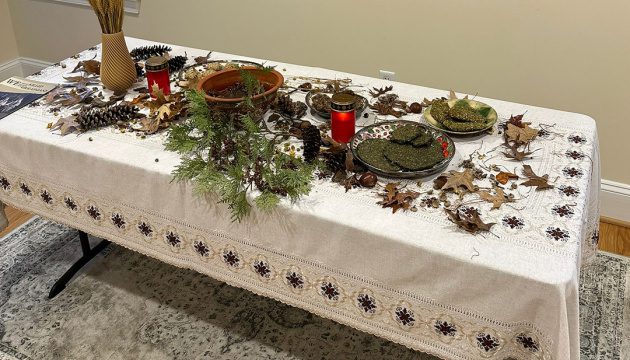
Oak bark soup, potato peels, pancakes with grass: Holodomor survival meals on display at exhibition in Washington
Washington’s Ukrainian House has opened an exhibition showcasing the survival meals that kept Ukrainians alive during Holodomor: oak bark soup, potato peel pancakes mixed with grass and flax seeds, and grass bread, according to UkrInform.
The Holodomor, a famine that struck Soviet Ukraine from 1932 to 1933, stands as one of the most devastating events in Ukrainian history, resulting in the deaths of millions of Ukrainians. The Soviet regime orchestrated this artificial famine under Joseph Stalin, who implemented extreme grain procurement policies that led to widespread starvation. The policies aimed to suppress Ukrainian nationalism and resistance to Soviet control. In 2006, Ukraine officially recognized the Holodomor as genocide against the Ukrainian people. The designation has been supported by numerous countries, although it remains contested by some, notably Russia.
During this period, the Soviet government confiscated grain and other food supplies from Ukrainian peasants while imposing impossibly high quotas for grain production. As a result, millions were left without food or means of survival. Historical estimates of the death toll vary widely, with figures ranging from 3.5 million to as many as 10 million victims.
Activists in Washington have recreated some of the meals that Ukrainians ate to survive in order to draw Americans’ attention to the tragic page in Ukraine’s history.
“It is a joint initiative of the Ukrainian House and the Ukrainian restaurant ‘RUTA’ to raise awareness about the tragedy of the Holodomor,” explained Ruslan Falkov, one of the exhibit’s organizers.
The director of International and Governmental Relations at the Ukrainian House and co-founder of the Ukrainian restaurant “RUTA” said that the recipes were sourced from Mykola Bondarenko’s collection, “Ukraine 1933: A Culinary Book,” which compiles memories of those who survived the famine during Stalin’s rule. Bondarenko interviewed survivors who shared details of their “menus” during the Holodomor.
“At the exhibition’s center, visitors can see a soup made from pinecones, twigs, and oak bark.
We also recreated potato peel pancakes mixed with grass and flax seeds. In some regions of Ukraine, flour was mixed with grass to bake flatbreads,” he noted.
The exhibition also features grass bread made from grass and flax seeds, nettle pancakes, and oak bark steamed with flour.
“They serve as an emotional reminder of the Holodomor. These dishes starkly contrast the rich Ukrainian cuisine we know today,” emphasized Ruslan Falkov.
The exhibit will be open to visitors at the Ukrainian House in Washington until the end of November.
Read also:





















